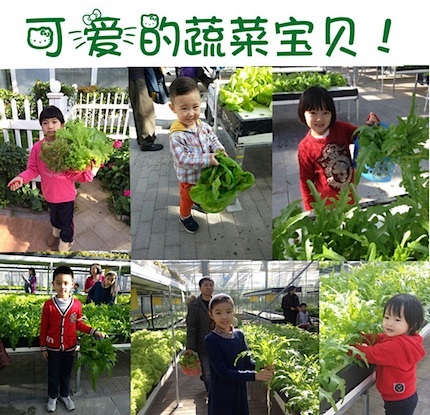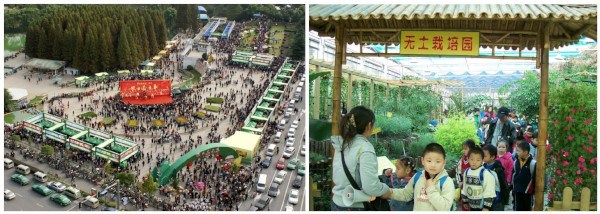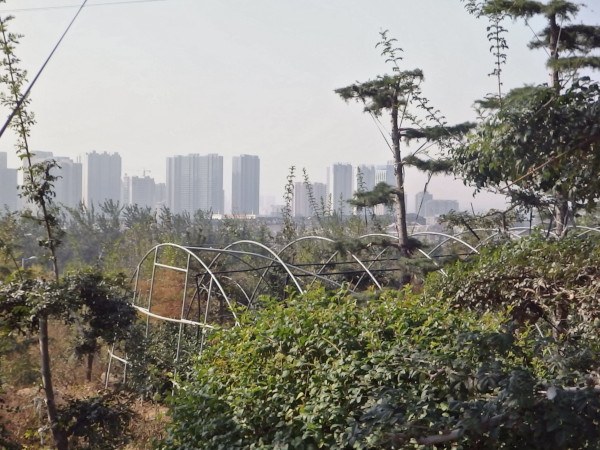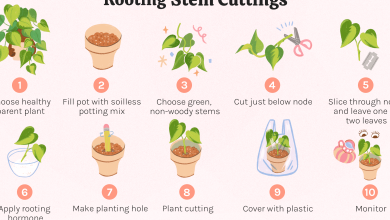Urban Naturation in China: Much More than Orchards

Continuing with the previous post Urban agriculture in China, why is it necessary? Today I will talk to you about some of the urban nature projects in China that I already told you about.

We saw that there are several types of orchards or green spaces in cities depending on who promotes or promotes them: the government, ecological institutions or organizations, companies, individuals…
Let’s see some examples
Urban naturation promoted by public institutions
In China there are more and more schools that have orchards and green areas, or initiatives to bring children closer to Urban and Peri-urban Agriculture or environmental education. An example is the National Agricultural Science & Technology Demonstration Park, promoted by the Chinese Academy of Agriculture Science (CAAS). This park opened in 2010 is located near the center of Beijing, and is dedicated to teaching horticulture, techniques such as hydroponics or the benefits of Urban Agriculture for children and adolescents.
It also highlights the development of «agro-parks» in Beijing. The municipal government of this city has launched several campaigns to promote these places, which, they say, have a dual purpose: food production along with eco-tourism and environmental education for urbanites.
According to an article I recently read, different types of Urban Nature are being developed in Beijing thanks to the creation of “agro-parks” or urban and peri-urban green spaces. There are five different types (depending on the area in which they are located): some focused on gardening or improving the image of the city, others on the promotion of agritourism, organic farming, advances in agriculture or the promotion of local markets and producers. There are already more than 1,300 and the Government is working to encourage farmers to start more spaces of this type, as well as in the creation of improvement and evaluation plans.
To help combat pollution, the government is promoting plans for reforestation and planting forests that surround cities, such as one of more than 6,000 hectares, which was planned a couple of years ago in Beijing.
In addition, there are more and more vegetable gardens and walls in the cities of China. You can see some examples in the post Urban Nature in Shanghai, what I saw on my trip.
Another example of this type of initiative is the “221 Project”, which was launched by the Beijing Rural Economic Research Center and is a network for the support of Urban Nature in Beijing.: the inhabitants of Beijing can collect information on fairs or events related to Urban Agriculture and farmers use it to promote their products and to find out about new techniques and technologies that make urban agriculture more efficient (water recycling, irrigation systems, etc).
Tianjin Eco-City is a very interesting urban greening project that aims to create a self-sustaining and ecological city within the Chinese city of Tianjin (I already told you something about this project in the Qixin Ecological garden in Tianjin post).

There are many more examples of government initiatives, such as the Shanghai Sunqiao hi-tech agro-park (where, for example, seeds are sold or workshops for children are organised), the Nanjing Agro-carnival… or many more.
Organizations and groups that promote Urban Nature in China
There are several non-profit organizations and foundations that aim to promote agriculture in cities to make them more liveable and sustainable. We recently met two of them that work nationally: Shanghai Roots & Shoots and Good to China. Both initiate and develop projects of school gardens, urban gardens on roofs or community gardens in various cities in China.
This week we have been visiting some: Jiashan Skyfarm and Aken Green Skyfarm, both installed on rooftops in Shanghai (you can click on the links to find out what these urban gardens are like and how they work).
Perhaps not as many as in Spain, but there are also neighborhood initiatives or groups of people interested in urban agriculture that carry out urban garden projects in some neighborhoods, such as the Sanyuanli Community Garden in Beijing, which we will visit shortly.
Urban and peri-urban agriculture
Tourist monetization of farms and peri-urban farms in China is becoming very common. You can read a little more about this in the post Peri- urban agriculture: a tourist business in China.
Orchards and private gardens
As Álvaro will tell you soon in the post Urban Agriculture in China: the Hutongs, these humble neighborhoods of Beijing are full of green corners.
In many of them, families cultivate in pots or on roofs for the consumption of vegetables and aromatics at home. I leave you some photos that I have taken in different «hutons» (hutongs) of Beijing:

Also in the houses there are those who venture to cultivate orchards or gardens, like these two men from Beijing and Hong Kong, who have installed orchards on the roofs of their buildings (I leave you a very cool video where you can see them).
Finally, I wanted to show you another example of this: a two-hectare urban garden-orchard that we visited a few days ago and where a professor from the Taian Agricultural University grows his fruit trees and vegetables. An authentic paradise one step away from the city.

I leave you this photograph of the place so you can get an idea, and Álvaro will publish an article about it shortly.
I hope you liked the post and that it helps you get an idea of what Urban Nature is here in China. Greetings Farmers!

![Photo of Boron in Plants: [Use, Advantages and Application]](https://www.complete-gardening.com/wp-content/uploads/2022/08/boron-in-plants-use-advantages-and-application-390x220.png)


